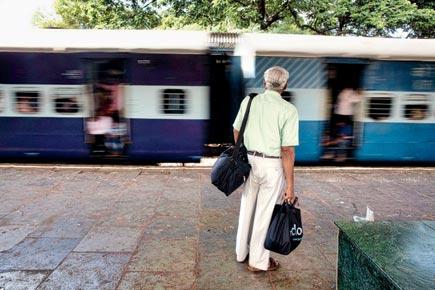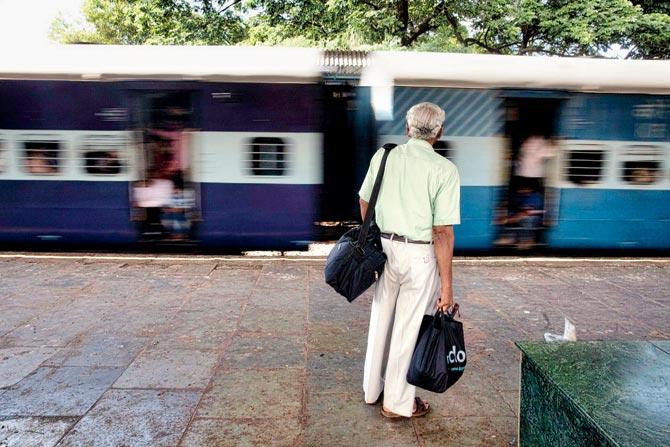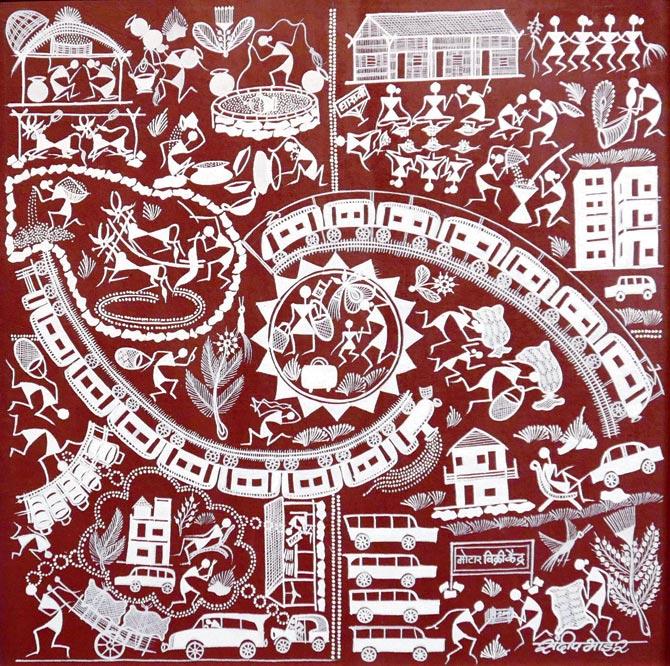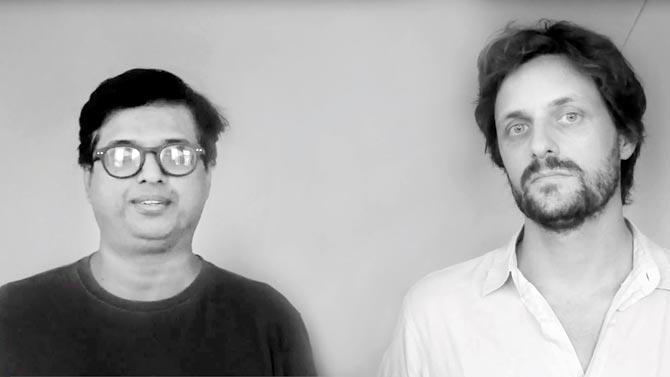Why does a home in a Ratnagiri village resemble a Mumbai chawl? Why do Bhandup houses look like rural settlements? An exhibit asks and answers


Karam Bele, a retired employee of Bank of India travels regularly on the Konkan line between Mumbai and Roha to see his son who works there
ADVERTISEMENT
Last year, when Rahul Srivastava and Matias Echanove, co-founders of urbz, a Mumbai-based collective of urban researchers and architects, visited Ukshi village in Ratnagiri with a five-member team, they came across a home with an unusual layout. A living room led to a long corridor with three rooms on either side, occupied by six brothers and their families. “Living in a Mumbai chawl inspired them to rebuild the house on the same pattern,” says Srivastava.

A Warli creation by artist Sandeep Bhoir
He adds, “We also discovered that every month, Mumbai residents hailing from villages in Konkan meet at Five Gardens near Wadala to offer donations to associations named after their village. The money is used to build infrastructure back home.”
These, among other stories that explore urban-rural relationships, feature in Mumbai Return: Journeys Beyond The City, an exhibition presented by Dr Bhau Daji Lad Mumbai City Museum in collaboration with urbz.

Rahul Srivastava and Matias Echanove
Echanove says, “The exhibition emerged from questions that we found ourselves asking about urbanisation in India. Why do several urban residents continue to keep connections with the villages they come from? How do families maintain active relations across vast territories? Does India really reflect the global expectation of rural-urban migration as a one-way street?”
 In and around Udupi along the Konkan coast. Pics courtesy/Ishan Tankha, urbz Circulatory Lives Project
In and around Udupi along the Konkan coast. Pics courtesy/Ishan Tankha, urbz Circulatory Lives Project
Through a series of photographs, the exhibition depicts the circulatory journey of five urban families between their neighbourhoods in Bhandup and Naigaon (Dadar) and villages of Ukshi, Kondhe, Songiri and Kotluk - all in Ratnagiri district.
The team started documenting these journeys over a year ago but research began four years ago in association with the Mobile Lives Forum, a Parisian think tank connected to the French Railway Company. The first stage involved looking at the network of urban systems along the Konkan coast stretching from Mumbai to Mangalore.
“We travelled with them. On one level, the stories are so ordinary - about the journey by train or bus, spending vacations, excitement about building a house in the village, the celebration of festivals - that they are overlooked completely, especially by commentators of urbanisation as they don’t fit into a standard expectation of a rural-urban one-way story. Yet, each family’s journey is distinct, and must be highlighted,” says Echanove.
The exhibition also features traditional artistic renderings, architectural drawings of vernacular houses and model homes created by Dharavi artisans. Several exhibits also reflect how rural influences creep into an urban habitat. For instance, an architectural drawing of homegrown settlements in neighbourhoods such as Konkan Nagar of Bhandup shows how families, though residing in separate units, still live close by. “It’s similar to a village imprint where
the next house belongs to a relative,” he adds. Interactive digital installations and videos are also feature in the exhibition.
From: Today till July 31, 10 am to 6 pm
At: Rani Baug, BA Marg, Byculla (E)
Call: 23731234
 Subscribe today by clicking the link and stay updated with the latest news!" Click here!
Subscribe today by clicking the link and stay updated with the latest news!" Click here!






